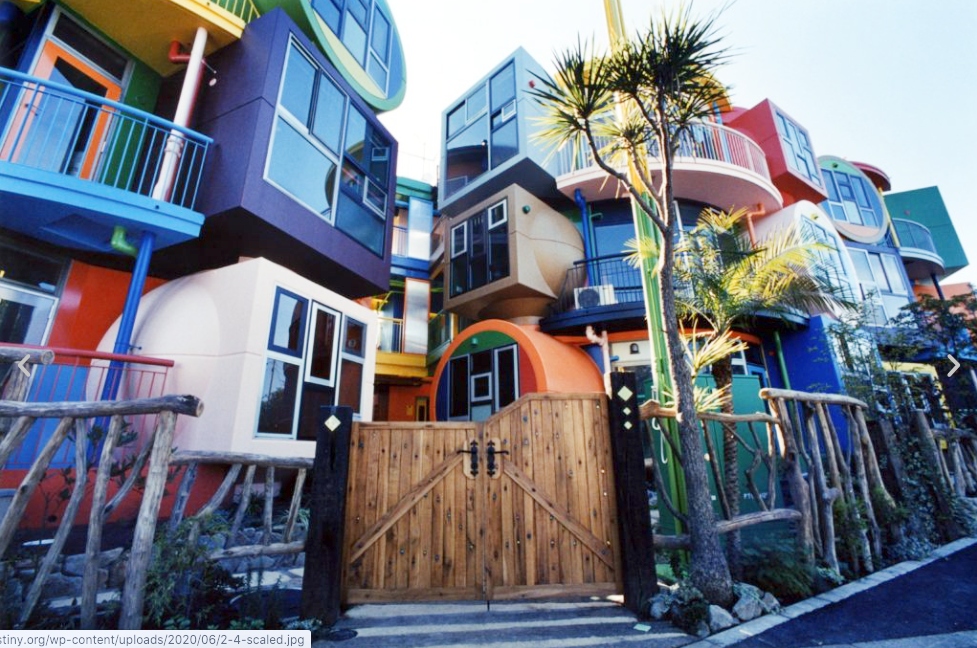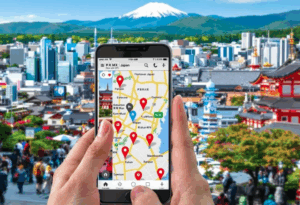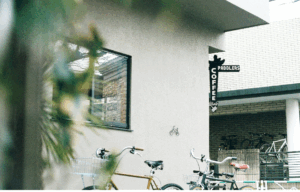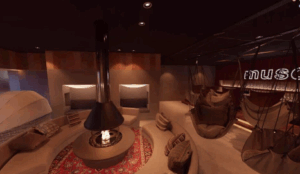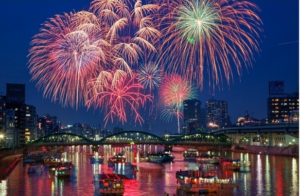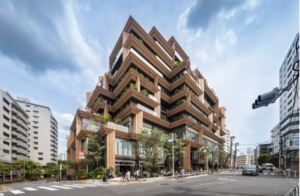Asakusa Culture and Tourism Center (Kengo Kuma/Asakusa)
Situated in the bustling tourist hub of Asakusa, right across from the Kaminarimon, the Asakusa Culture and Tourism Center stands out with its striking modern design by renowned architect Kengo Kuma. It’s not just a pretty sight, though. You can stop by for handy tourist info, free wifi, or catch a cool view from the open terrace up top.
Address: 2-18-9 Kaminarimon, Taito, Tokyo
Daiwa Ubiquitous Research Building (Kengo Kuma/Hongo)
A sophisticated research facility, harmonizing fire-resistant cedar panels with a neighboring Japanese garden, exudes an unforgettable charm. Renowned for its design, don’t overlook the famous Japanese sweets shop “Kurogi” on the first floor, a masterpiece by one of Japan’s leading designers and plasterers.
Address: 7-3-1 Hongo, Bunkyo, Tokyo
Sunny Hills (Kengo Kuma/Minami Aoyama)
The Sunny Hills Aoyama building is another architectural gem designed by Kengo Kuma. You can observe here a harmonious blend of traditional Japanese aesthetics and contemporary design principles. The structure’s facade, adorned with interlocking wooden slats reminiscent of a traditional bamboo basketry technique known as “bamboo weaving,” offers a striking visual contrast against the urban landscape. Inside, the building houses the famed Sunny Hills confectionery shop, renowned for its delectable pineapple cakes. The interior is characterized by a warm and inviting atmosphere, with the same wooden lattice motif extending throughout the space. Natural light filters through the intricate latticework, creating a serene ambiance that complements the artistry of the sweets on display.
Address: 3-10-20 Minamiaoyama, Minato, Tokyo
New National Stadium (Kengo Kuma/Kasumigaoka)
Last but not least architectural wonder from Kengo Kuma. Once again you can see, how he uses cedar to reflect sustainability and reverence for nature “stadium in the forest” concept integrates seamlessly with Meiji Jingu Gaien Park, promoting a sustainable design ethos. Spectator comfort is prioritized with natural ventilation and ample green spaces. The stadium represents a fusion of contemporary innovation and traditional craftsmanship, offering a world-class venue while honoring Japan’s cultural heritage.
Address: 10-1 Kasumigaokamachi, Shinjuku, Tokyo
Tokyu PLAZA Omotesando Harajuku (Takushi Nakamura/Omotesando)
The design of Tokyu Plaza Omotesando Harajuku creates the illusion of trees floating in the sky above the building, adding a whimsical touch to its architecture. Additionally, the elevator, resembling a kaleidoscope, stands out as another captivating piece of art within the complex. On the 6th floor, you will discover the tranquil rooftop terrace, providing a serene escape from the bustling city. Here, surrounded by greenery and offering panoramic views, you can recharge after exploring the area.
Address: 4-30-3 Jingumae, Shibuya, Tokyo
Musashino Place (Takehiko Higa/Musashino)
Architect Takehiko Higa articulated his vision for the project as creating a “public facility where people and things can meet.” The distinctive white building stands out with its unique window shapes, a testament to the thoughtful design process. Every aspect, from the architecture to the park adjacent to it and the interior furniture, has been carefully considered by the designer. This meticulous attention to detail ensures that Musashino Place is not just a functional space but a visually striking and inviting environment.
Address: 2-3-18 Kyonancho, Musashino, Tokyo
Reversible Destiny Lofts MITAKA – In Memory of Helen Keller (Shusaku Arakawa, Mitaka)
The Reversible Destiny Lofts MITAKA is a groundbreaking residential building designed by Arakawa and Gins. It challenges conventional architecture with irregular shapes, vibrant colors, and uneven floors. The space is intended to stimulate inhabitants, promoting longevity and vitality by engaging both body and mind. Named “In Memory of Helen Keller,” it pays homage to the renowned activist, reflecting the architects’ belief in overcoming limitations. This avant-garde approach exemplifies the connection between space and human experience. By doing so it will urge you to adapt and thrive.
Address: 2-2-8 Osawa, Mitaka, Tokyo
Tokyo International Forum (Rafael Viñoly Architects, Marunouchi)
If you like great architecture, stop by The Tokyo International Forum. It is indeed a must-see contraction. Designed by architect Rafael Viñoly, it stands out for its distinctive and innovative design. The building’s unique glass and steel structure, characterized by soaring atriums and geometric shapes, is truly remarkable. Its striking silhouette and futuristic aesthetic make it a must-visit destination for architecture enthusiasts and tourists alike.
Address: 3-5-1 Merunouchi, Chiyoda, Tokyo
TRUNK (HOTEL) YOYOGI PARK / Keiji Ashizawa Design
TRUNK (HOTEL) YOYOGI PARK, designed by Keiji Ashizawa is a testament to his adeptness in adaptive reuse. It occupies a renovated building where original character harmonizes with modernity and sustainability. Natural elements are seamlessly integrated, fostering a serene connection with Yoyogi Park through features like rooftop gardens and inner courtyards. Ashizawa’s design ethos prioritizes simplicity and functionality, evident in the architecture’s clean lines, spacious interiors, and subdued color schemes. This approach cultivates an atmosphere of tranquility and warmth throughout the hotel. You should visit this place if you like great architecture and comfort.
Address: 1-15-2 Tomigaya, Shibuya, Tokyo
